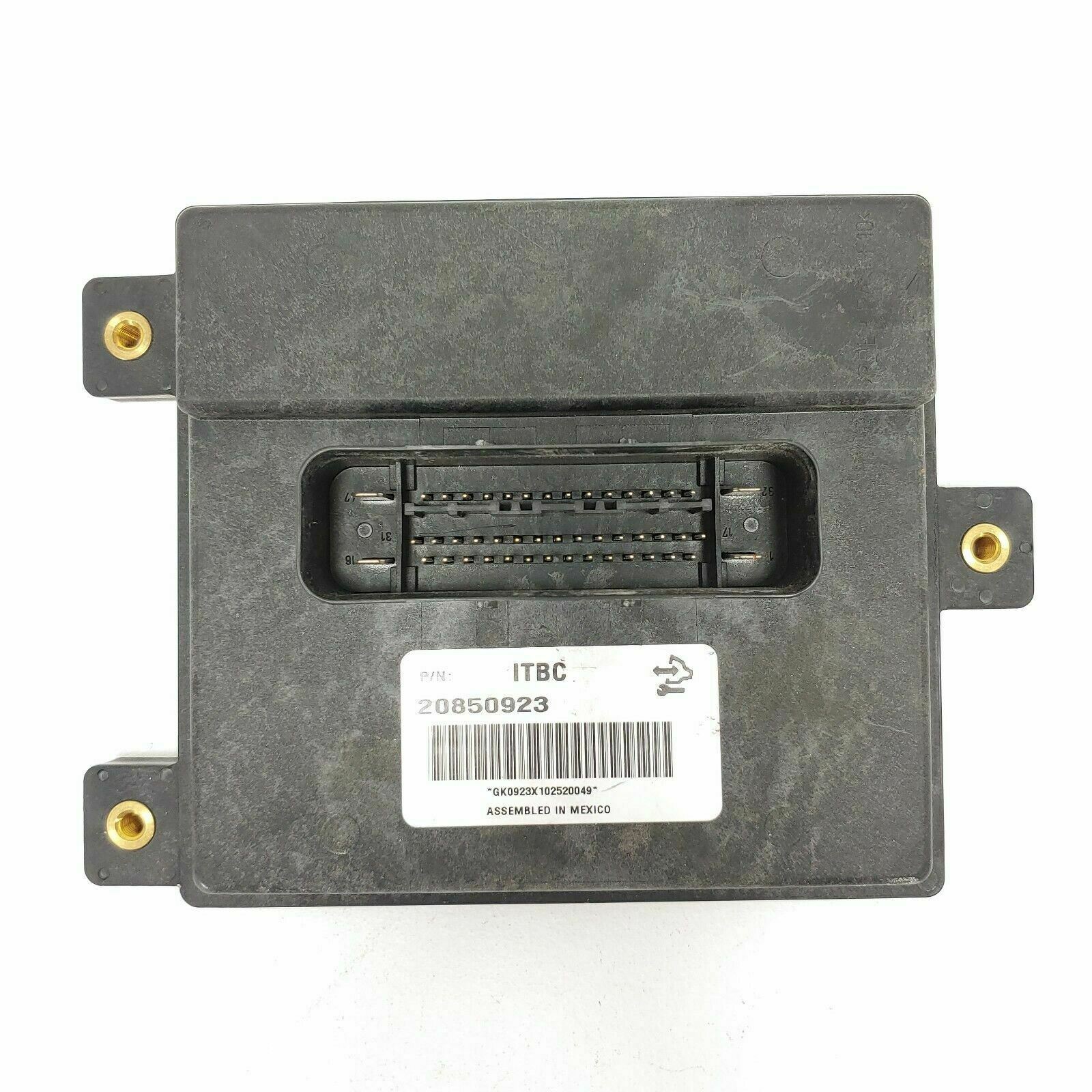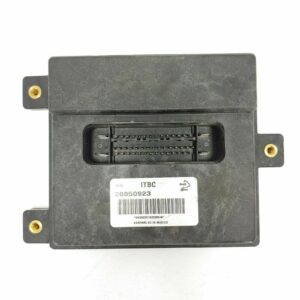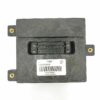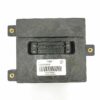Regain Control and Confidence When Towing
Is the dreaded “Service Trailer Brake System” message lighting up your dashboard every time you hook up your trailer? As a technician with over two decades of experience, I’ve seen this issue countless times on GM HD trucks. It’s more than an annoyance; it’s a critical safety failure. When your Trailer Brake Control Module (TBCM) fails, your truck loses its ability to properly actuate the trailer’s brakes, dramatically increasing stopping distances and putting you, your cargo, and others at risk. This module is the solution to restore that essential function and peace of mind.
This isn’t just a replacement part; it’s a complete, ready-to-install fix. We take a genuine GM module and flash it with the latest official software, specifically programmed to your truck’s Vehicle Identification Number (VIN). This crucial step, which we handle before shipping, means you can skip the expensive trip to the dealership for programming. You get a part that is guaranteed to communicate flawlessly with your truck’s other systems right out of the box. For anyone looking for a reliable fix for their 2008-2009 Sierra 1500 TBCM, this is the most direct path back to safe towing.
Case Study: A Tricky Diagnosis
A customer brought in his ’08 Silverado 2500, frustrated with an intermittent “Service Trailer Brake” light. He’d already replaced the trailer-side wiring, but the problem persisted. On the lift, I went straight for the TBCM on the driver’s side frame rail. The culprit was immediately obvious: the module’s casing was swollen, and the connectors were green with corrosion. Living on the frame, these units are constantly exposed to water, salt, and road grime. We swapped in one of our pre-programmed modules, and the error cleared instantly. The trailer brakes responded perfectly on the test drive. It’s a textbook failure I’ve diagnosed hundreds of times, and a VIN-programmed module is always the most dependable fix.
Is Your Truck Showing These Symptoms?
A failing TBCM will give you clear warning signs. If you’re experiencing any of the following, it’s highly likely this module is the cause.
- ✔ “Service Trailer Brake System” message on the Driver Information Center (DIC).
- ✔ Trailer brakes not engaging or engaging erratically when the manual switch is used.
- ✔ No output or gain adjustment for the trailer brakes.
- ✔ Diagnostic Trouble Codes (DTCs) stored in the system, such as U0121 (Lost Communication With TBCM) or C0299 (Brake Booster Performance).
- ✔ The integrated brake controller seems completely dead or unresponsive.
A Straightforward Guide to Installation
Replacing the TBCM is a job most DIYers can handle with basic tools. Because we pre-program the module, there are no special electronic tools needed. Just follow these steps for a successful installation of your new 2008-2009 Sierra 1500 TBCM.
- Safety First: Always disconnect the negative terminal from your truck’s battery before starting any electrical work.
- Locate the Module: Find the TBCM mounted to the inside of the frame rail on the driver’s side (LH), typically near the spare tire.
- Disconnect Electrical Connectors: Carefully press the release tabs and unplug the two electrical connectors from the old module. Inspect the connectors for any corrosion or damage and clean them if necessary.
- Remove the Old Module: The module is held to the frame by a few bolts (usually 10mm or 13mm). Remove these bolts and take the old module off the truck.
- Install the New Module: Mount your new, pre-programmed TBCM in the same location and secure it with the original bolts.
- Reconnect and Test: Plug the two electrical connectors firmly into the new module. Reconnect your battery’s negative terminal. Start the truck and verify that the “Service Trailer Brake System” message is gone.
Guaranteed Fitment for Your GM Truck
We guarantee this module, part number 25907533 (also compatible with 20850923, 25854535, and 25788981), is the correct fit for the following vehicles equipped with the factory towing control option. It is located on the LH rear frame.
- ✔ 2007-2009 Sierra 3500 Pickup
- ✔ 2007-2009 Sierra 2500 Pickup
- ✔ 2007-2009 Silverado 2500 Pickup
- ✔ 2007-2009 Silverado 3500 Pickup
- ✔ 2008-2009 Silverado 1500 Pickup
- ✔ 2008-2009 Sierra Denali
- ✔ 2008-2009 Sierra 1500 Pickup
Frequently Asked Questions About the 2008-2009 Sierra 1500 TBCM
Why do you need my VIN?
Why do you need my VIN?
Your truck’s Vehicle Identification Number (VIN) is essential for us to program the module with the correct GM software and vehicle-specific calibrations. This ensures it communicates perfectly with your truck’s systems, just like a part installed at the factory, and prevents compatibility errors.
Is this part difficult to install?
Why do you need my VIN?
Your truck’s Vehicle Identification Number (VIN) is essential for us to program the module with the correct GM software and vehicle-specific calibrations. This ensures it communicates perfectly with your truck’s systems, just like a part installed at the factory, and prevents compatibility errors.
Will this fix the ‘Service Trailer Brake System’ warning?
Why do you need my VIN?
Your truck’s Vehicle Identification Number (VIN) is essential for us to program the module with the correct GM software and vehicle-specific calibrations. This ensures it communicates perfectly with your truck’s systems, just like a part installed at the factory, and prevents compatibility errors.
What happens if I don’t provide my VIN?
Why do you need my VIN?
Your truck’s Vehicle Identification Number (VIN) is essential for us to program the module with the correct GM software and vehicle-specific calibrations. This ensures it communicates perfectly with your truck’s systems, just like a part installed at the factory, and prevents compatibility errors.
Is this compatible with other part numbers?
Why do you need my VIN?
Your truck’s Vehicle Identification Number (VIN) is essential for us to program the module with the correct GM software and vehicle-specific calibrations. This ensures it communicates perfectly with your truck’s systems, just like a part installed at the factory, and prevents compatibility errors.



